Mining the past to shape the future of health communications
Agnostic hosted a panel of experts this spring to dig into the power shift in communications during the pandemic. Hosted by health journalist Avis Favaro, with insights from Dr. Samantha Yammine (AKA Science Sam), Dr. Kate Mulligan, Professor at Dalla Lana School of Public Health, and our own Nancy Dale, SVP of Health, we had a lively discussion with incredibly insightful commentary showcasing different perspectives. Some of Nancy’s thoughts on the current environment are shared below. It’s clear we are just starting to learn from our experiences and have an opportunity to rethink the way we communicate and engage in the health space.
Thinking back over the last two years, it’s difficult to pinpoint one particular moment where I felt the world would be forever changed.
From the comfort of Canada, we watched parts of Europe and NYC lockdown, naively hoping things would be different here. Things quickly changed as that moment of dread hit as we watched the Prime Minister announce our own lockdown.
Rumours and fears circulated immediately. We received text messages from scared family, friends and colleagues concerned about how the virus could be transmitted. Personally, I locked myself in my bathroom, exhausted, wondering how my elderly mother would fare, or how my family would survive a “few weeks” of homeschooling. The initial phase was terrifying and chaotic, and something we should reflect more on and truly marvel at the speed by which we, as individuals and organizations, were able to adapt.
As if we were thrown into a sick game of global telephone, many of us needed to move into an adrenaline-fueled phase of communications with needs and strategies changingly hourly. Organizations sought counsel and support in navigating all the necessary pivots to reimagine their relationships with stakeholders, filtering accurate facts to act on in the sea of information amongst increasingly polarized opinions.
The last few years have been a truly humbling experience. From launching a COVID-19 vaccine, supporting first responder mental health, to ensuring the voices of kids with rare diseases were heard, the active role I’ve been able to engage in as a health communicator during our Canadian pandemic response has led me to these following insights:
Language and facts matter:
Nothing is absolute when you’re talking about a new virus, treatment, vaccine, or new policies and protocols. Leaders may shy away from admitting when they don’t know all the answers, but during the pandemic, leaders and organizations that came out on top were those who admitted when they didn’t have the answers.
Transparency builds trust and positive reputation over time with your audience. When the National Committee on Immunization (NACI) lacked a coordinated federal communications plan throughout the pandemic, stakeholders across Canada expressed massive disappointment. Especially in May 2021, when their advice ran counter to all the other recommendations around vaccine “shopping” and resulted in consumer vaccine hesitancy that added to the confusion. Influential physicians and pharmacists had to spend countless hours clarifying that the best vaccine was the first one offered.
Expanding on who we define as influencers:
While working with key opinion leaders like physicians and patient advocacy groups has always been a core component of health communications, the last few years have shown us that we can be more open to who we work with and how we approach partnerships.
It’s time to rethink who we engage in campaigns. Non-traditional voices became health information powerhouses during the pandemic and can be major assets in future health communications. People gravitate and look for information from people they can identify with, not necessarily the institution behind them. It’s an important reminder why, at Agnostic, we use a one-size-fits-none approach, and why diversity of perspective and demographics matters in campaigns.
It’s critical to foster a growth mindset:
It feels like everything we knew to be true before the pandemic no longer holds true.
Everything from the way people work, socialize, communicate and absorb information has changed. Now is the time to rethink corporate narratives and challenge traditional strategies, think deeper about what audiences like patients and caregivers truly want. We need to suspend agendas and listen more so we don't get left behind in shaping the future.
Doing the next right thing:
We have to embrace huge amounts of uncertainty and use it as an opportunity to become more nimble. In doing so, we can help leaders see around corners to make the next best move. Quarterly or monthly plans have now become more realistic than annual plans as we can often become immobilized when trying to predict the future. Forecasting remains beneficial, but by focusing on the next right thing and doing it as well as we can, we help bring some semblance of control back to our lives.
What’s next
Through much heartbreak and lots of resilience, we’ve made it this far. There’s no doubt we’ll continue to learn as we make our way through year three of the pandemic. Message fatigue, public health guidance changes, elections, employee engagement and the tsunami of mental health challenges will keep us busy. It’s truly never been a more exciting time in healthcare communications. We look forward to new partnerships, leading with empathy and experience, and truly digging-into better thinking with clients.
It won't be easy, but the public is engaged now more than ever before, the variety of tools is expanding, and businesses are more open than they’ve ever been to rethink their approach to communications.
So get in touch and see what Better Thinking, for Health, could do for you.
